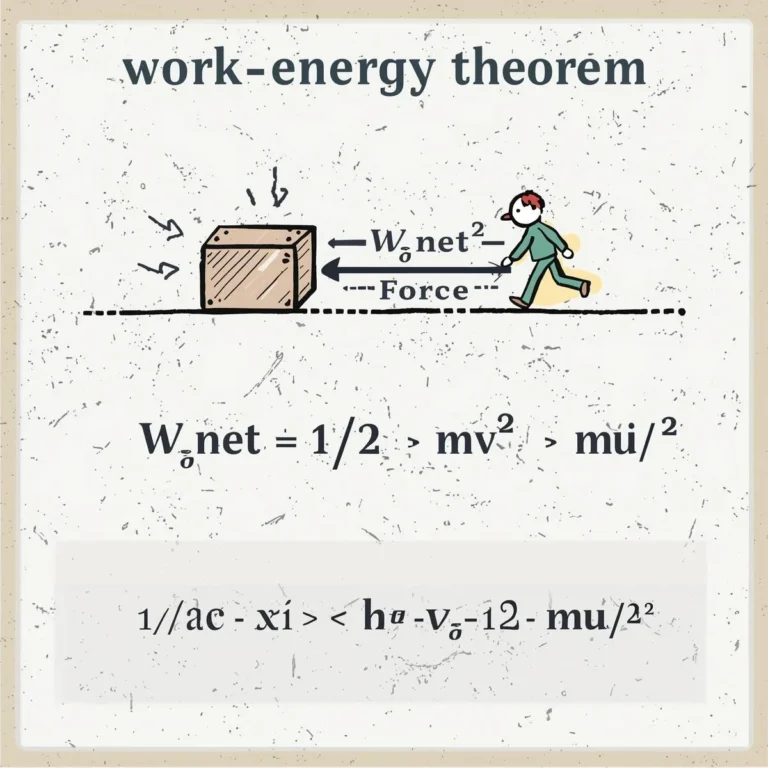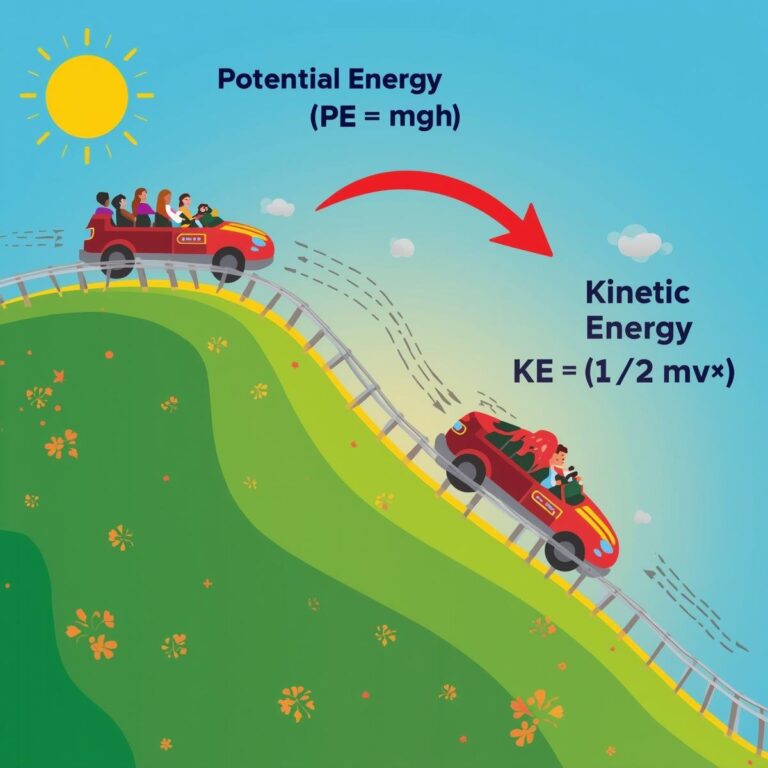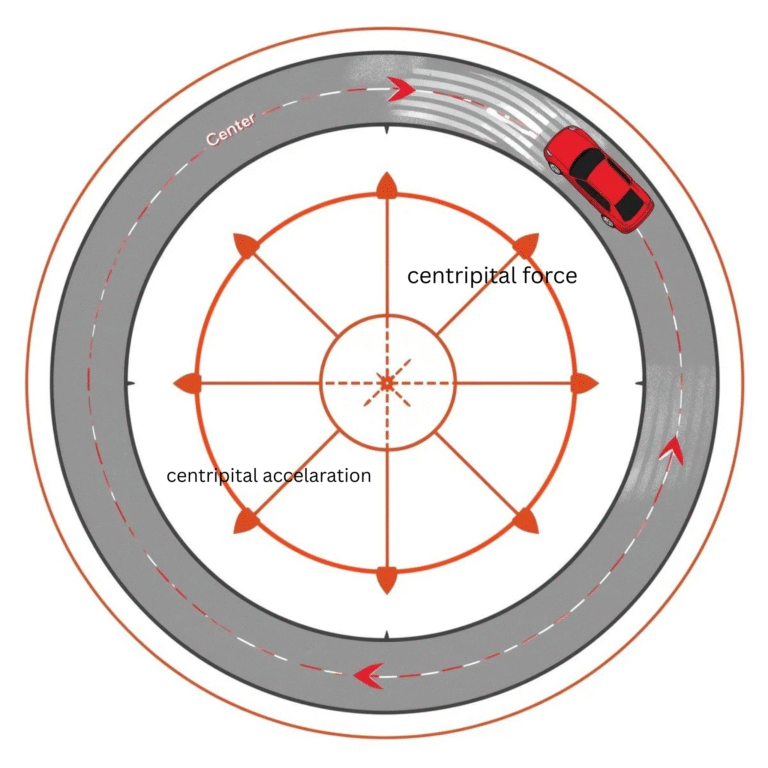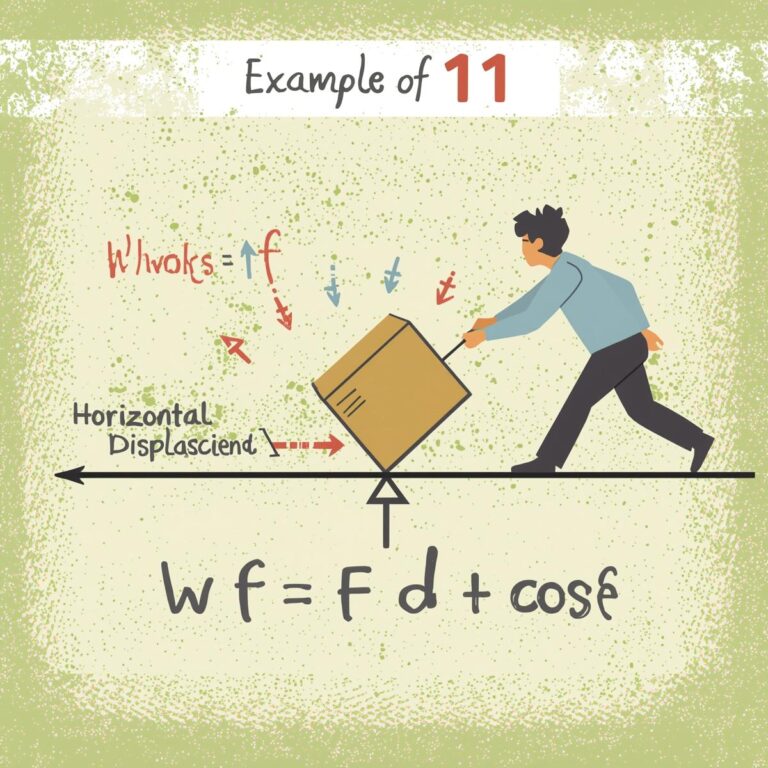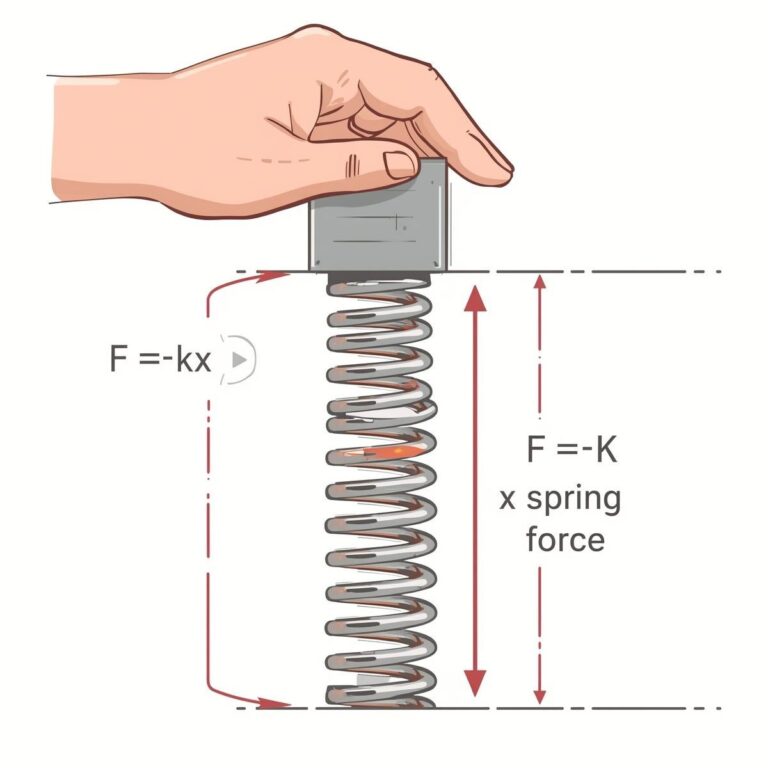Definition
Work is defined as the product of the force applied to an object and the displacement of the object in the direction of the force. Work is done only when a force causes displacement.
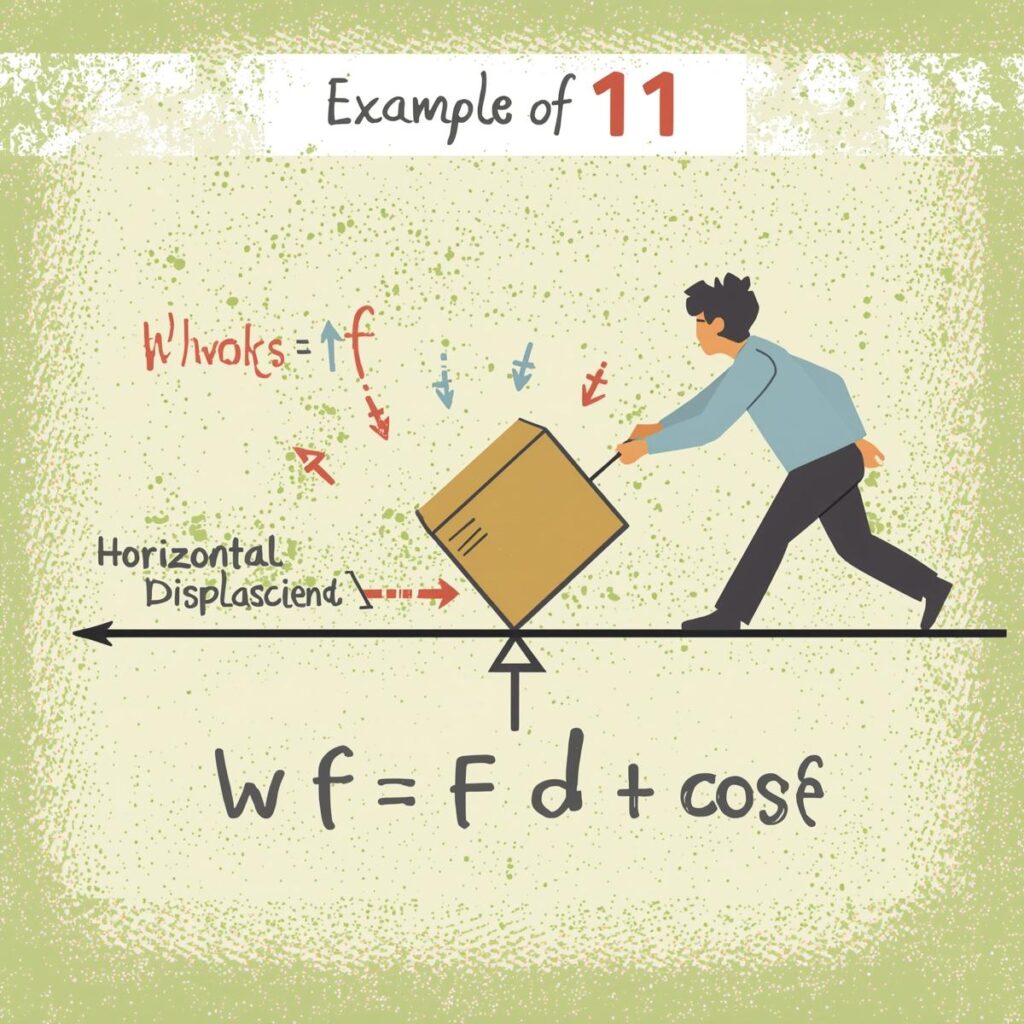
Formula
W = F · d · cosθ
Where:
- W = work done (Joule, J)
- F = magnitude of the force (Newton, N)
- d = displacement (meter, m)
- θ = angle between the force and displacement vectors
Types of Work
1. Positive Work
- Definition: When the force and displacement are in the same direction.
- Example: Lifting a box upward.
- Explanation: θ = 0°, cosθ = 1, so W = Fd (positive value).
2. Negative Work
- Definition: When the force and displacement are in opposite directions.
- Example: A person lowering a box gently to the ground.
- Explanation: θ = 180°, cosθ = -1, so W = -Fd (negative value).
3. Zero Work
- Definition: When the force is perpendicular to the displacement, or when there is no displacement.
- Example: Carrying a bag while walking horizontally (force is vertical, displacement is horizontal).
- Explanation: θ = 90°, cosθ = 0, so W = 0.
Explanation
- If the force and displacement are in the same direction, θ = 0°, so cosθ = 1, and W = Fd.
- If the force is perpendicular to displacement, θ = 90°, so cosθ = 0, and W = 0 (no work is done).
- If the force and displacement are in opposite directions, θ = 180°, so cosθ = -1, and W = -Fd (negative work).
Example
- Lifting a box vertically:
A person lifts a box of mass 10 kg to a height of 2 m.
Force applied = weight of box = mg = 10 × 9.8 = 98 N
Displacement = 2 m
Angle θ = 0° (force and displacement both upward)
Work done, W = Fd cosθ = 98 × 2 × 1 = 196 J - Pulling a suitcase:
A suitcase is pulled with a force of 50 N at an angle of 60° to the horizontal for a distance of 10 m.
W = 50 × 10 × cos60° = 500 × 0.5 = 250 J
Illustrative Image
Summary Table
| Aspect | Description |
|---|---|
| Definition | Product of force and displacement in the direction of force |
| Formula | W = F · d · cosθ |
| SI Unit | Joule (J) |
| Example | Lifting a box, pulling a suitcase |
